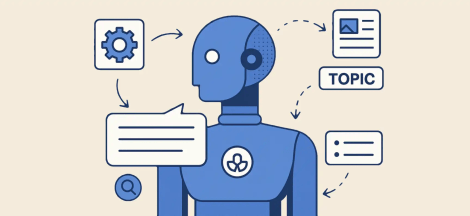In today’s data-driven world, implementing efficient data management and processing strategies is paramount. As organisations strive to leverage the power of Artificial Intelligence (AI) and Machine Learning (ML), having a robust data architecture becomes critical. One such architecture that has gained prominence is the Medallion Architecture. This blog delves into the Medallion Architecture and highlights its importance in a data lake strategy, especially in the context of feeding data to AI systems.
What is the Medallion Architecture?

The Medallion Architecture, also known as the Delta Lake architecture, is a data design pattern used to manage and process data in a data lake. This architecture is structured into three layers:
- Bronze Layer: The raw data layer where data is ingested in its original format from various sources. This layer serves as the foundation for all subsequent data processing activities.
- Silver Layer: The cleaned and enriched data layer where data transformations, such as cleaning, deduplication, and normalisation, are performed. This layer ensures data quality and consistency.
- Gold Layer: The business-level data layer where data is further refined and aggregated to meet specific business requirements. This layer is optimised for consumption by analytics and AI/ML models.
What is its relevance to AI?

Medallion architecture is highly relevant to AI systems because it provides a structured framework for organising data in a scalable and efficient way, which is crucial for training and deploying AI models. By dividing data into bronze, silver, and gold layers, this architecture enables the systematic processing of raw data into refined, high-quality datasets. This layered approach ensures that data is consistently cleaned, validated, and enriched, making it more reliable for AI applications. As AI systems rely heavily on large volumes of data, medallion architecture helps streamline data management, improving both the performance and accuracy of AI models. Below are a few key points that I have been highlighting through implementations and discussions with other peers:
- Data Quality and Consistency: The Medallion Architecture ensures that data quality and consistency are maintained throughout the data processing pipeline. By having distinct layers for raw, cleaned, and business-ready data, organisations can systematically address data quality issues and ensure that only high-quality data is fed into AI/ML models.
- Scalability and Flexibility: Data lakes are designed to handle large volumes of data from diverse sources. The Medallion Architecture enhances the scalability and flexibility of a data lake by providing a structured approach to data management. This structure allows organisations to scale their data processing capabilities as data volumes grow.
- Streamlined Data Processing: The layered approach of the Medallion Architecture streamlines data processing workflows. Each layer serves a specific purpose, enabling efficient data transformations and reducing the complexity of data pipelines. This streamlined approach ensures that data is processed and made available to AI systems in a timely manner.
- Enhanced Data Governance: Data governance is a critical aspect of managing data lakes. The Medallion Architecture facilitates better data governance by providing clear data lineage and traceability. Organisations can track data transformations and ensure compliance with regulatory requirements, thereby reducing the risk of data breaches and ensuring data privacy.
- Optimised AI/ML Workflows: AI and ML models rely heavily on high-quality, well-structured data. The Gold Layer of the Medallion Architecture provides business-level data that is ready for consumption by AI/ML models. This optimisation reduces the time and effort required to prepare data for model training and deployment, accelerating the development and deployment of AI solutions.
What does a typical implementation look like?

The usual implementation scenarios start with data ingestion from multiple data sources using various techniques, such as batch processes (e.g., ETL, ELT) and data streaming. Ending with the consumption by business users through BI tools like Tableau or Power BI, and by AI systems for tasks such as machine learning or predictive analytics. The Medallion Architecture is realised through the employment of data lake technologies such as Snowflake and Databricks, typically including the following:
- Data Ingestion: Ingest data from various sources into the Bronze Layer in its raw format. This data can include structured, semi-structured, and unstructured data.
- Data Transformation: Perform data cleaning, deduplication, augmentation and normalisation in the Silver Layer. Use data processing frameworks handle these transformations efficiently.
- Data Aggregation: Refine and aggregate data in the Gold Layer to meet specific business requirements. This may involve creating business-specific data models and aggregating data for reporting and analytics.
- Data Governance and Monitoring: Implement data governance practices to ensure data quality, security, and compliance. Monitor data pipelines to detect and address issues promptly.
Conclusion
The Medallion Architecture is a powerful strategy for managing and processing data in a data lake. Its layered approach ensures data quality, scalability, and streamlined data processing, making it an ideal choice for feeding data to AI and ML systems. By implementing the this approach, organisations can enhance their data lake strategy and unlock the full potential of their AI initiatives. As the demand for AI-driven insights continues to grow, having a robust data architecture like the Medallion Architecture becomes increasingly important for success.
By adopting the medallion architecture, organisations can build a solid foundation for their AI initiatives, improve data quality, and accelerate time to insights. As AI continues to evolve, the importance of a well-structured data lake will only grow, making the medallion architecture an indispensable approach for data-driven success.





 Training, Fine-Tuning, RAG, and Prompt Engineering AI Models
Training, Fine-Tuning, RAG, and Prompt Engineering AI Models
One Reply to “Preparing Data for AI with Medallion Architecture”